TLDR Photobiomodulation may improve certain health conditions, but more high-quality research is needed.
This umbrella review analyzed 15 meta-analyses of 204 randomized controlled trials with over 9,000 participants to assess the effects of photobiomodulation (PBM) on various health outcomes. PBM showed significant effects on 12 outcomes, including improvements in burning mouth syndrome, knee osteoarthritis, fibromyalgia, androgenetic alopecia, and cognitive function, with an effect size of 1.32 for hair density in androgenetic alopecia. However, the overall certainty of evidence was low to moderate due to heterogeneity and small-study effects, highlighting the need for further high-quality trials and standardized PBM protocols before widespread clinical adoption.
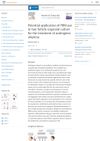 November 2023 in “Materials Today Bio”
November 2023 in “Materials Today Bio” Light therapy might help treat hereditary hair loss by improving hair follicle growth in lab cultures.
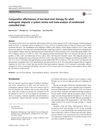 21 citations
,
January 2019 in “Lasers in Medical Science”
21 citations
,
January 2019 in “Lasers in Medical Science” Low-level laser therapy significantly increases hair density in adults with hair loss, with low-frequency treatment being more effective.
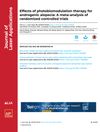 March 2020 in “Journal of Laser Applications”
March 2020 in “Journal of Laser Applications” Photobiomodulation therapy significantly increases hair density and growth for androgenic alopecia, but more research is needed to confirm safety.
 8 citations
,
October 2020 in “Lasers in Medical Science”
8 citations
,
October 2020 in “Lasers in Medical Science” LLLT helps treat hair loss by increasing blood flow, reducing inflammation, and stimulating growth factors.
1 citations
,
June 2022 in “Photobiomodulation, photomedicine, and laser surgery” Photobiomodulation increases hair density in 5 weeks for androgenetic alopecia.
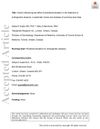 2 citations
,
August 2020 in “Dermatologic Therapy”
2 citations
,
August 2020 in “Dermatologic Therapy” Higher energy, longer exposure, and pulse irradiation improve hair density in androgenetic alopecia treatment.
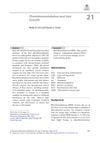 1 citations
,
January 2018 in “Springer eBooks”
1 citations
,
January 2018 in “Springer eBooks” Photobiomodulation is an effective and safe treatment for increasing hair growth in people with hair loss.






